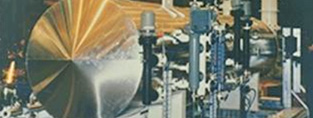
- (03) 5909 8218
- enquiry@fusionweld.com.au
Self Bunded Tanks and Their Most Common Uses
November 16, 2015

Bunding is a term used in several application domains, but as we're in the business of describing engineering principles, let's accept that this particular employment of the term is going to relate to a mechanical practice. Defined as a secondary layer of protection, the term relates to a secondary layer of protection around a tank, not some close-knit German alliance, as some dictionary definitions would have us believe.
Self Bunded Tanks are Government Mandated
International authorities handle spill containment scenarios in different ways, using special fire-resistant separating walls and dense construction materials to keep the spillage in check. A "bund" is the generic term used to describe this containment methodology, but a self bunded vessel actually incorporates this spillage redundancy system into the design of the tank, doubling the profile of the vessel. Of note here, this outer layer is designed only to hold the spill or overflow until remedial action can be initiated. Imagine a fuel tank located close to a local community. If the tank is designed without the bund enclosure, then complex external constructs will be needed to meet local legislature. These would include special walls and expensive construction materials, but, at the end of the day, the owner of the petrochemical vessel would have a storage product that came up to code. Still, this expensive option can be eliminated by simply opting for a self bunded storage container, a product that's manufactured with an internal spill containment solution.
Applications for Bunded Tanks
A petrochemical facility that has undergone an environmental impact study is a prime candidate for self bunded tanks. The containment ethic applied here ensures an adequate safety mechanism is in place, a physical layer fabricated by the same manufacturer that made the tank. In short, the fabricated unit and its secondary protective layer is guaranteed to meet the exacting standards set in place by the relevant governmental body, which, in the case of Australia, is the AS 1940-2004, among others. The comprehensive guidelines cover our aforementioned local fuel depot example, and extend to cover diesel fuel facilities, aviation fuel stands, and all other facilities where the chemical medium could threaten lives or the environment.
Specialist bunding solutions are dotted around every city and rural district. An oil filled version protects the insulated windings of high-voltage transformers while simultaneously circulating and dissipating the heat produced by the boxy unit. Self bunded products sit in production facilities and food processing plants, each one stopping milk or wine from escaping, but it's still self bunded tanks that draw the bulk of our attention. They stop pollution, act as a fire break, and generally stop pollutants leaking from inside a tank. Indeed, they're a second line of environmental protection, aiding in protecting a local area until a clean-up crew and an engineering team can repair the damage.
Contact Details
Fusion - Weld Engineering Pty Ltd
ABN 98 068 987619
1865 Frankston Flinders Road,
Hastings, VIC 3915
Ph: (03) 5909 8218
Optimized by NetwizardSEO.com.au
Recent Posts
- Compressed Hydrogen Storage Vessels: Material Selection, Design & Australian Standards
- Welding QA/QC in Oil & Gas Pressure Vessel Fabrication – Ensuring Code Compliance
- AS1210 vs ASME VIII Pressure Vessel Code: Key Differences for Australian Projects
- Mitigating Hydrogen-Induced Cracking in Pressure Vessels: Engineering and Material Strategies
- Storage Tank Solutions Australia: Field-Erected, Prefabricated & Self-Bunded Explained
- Reducing Environmental Risks: Self-Bunded Tanks in Australian Oil & Gas Operations
- Precision in Production: How Pressure Vessels Are Manufactured for Industrial Safety
- Shell & Tube Heat Exchangers: Improve Thermal Control & Energy Recovery in Petrochemical & Pharmaceutical Plants
- In-Service Inspection for Compressed Air Receivers for Power Plant Shutdown Prevention
- Power Plant Pipe Spooling Fabrication – Get Rapid, Code-Compliant Spools Ready for Installation
- Field Erected Tanks: Safe, Reliable On-Site Fuel Storage Solutions in Australia
- Custom Pressure Vessel Fabrication for Flammable Gases
Posts 2025
- Compressed Hydrogen Storage Vessels: Material Selection, Design & Australian Standards
- Welding QA/QC in Oil & Gas Pressure Vessel Fabrication – Ensuring Code Compliance
- View all articles…
Posts 2024
- Large Process Vessels: Optimising the Design for Maximum Efficiency [2025]
- Pressure Equipment Management System Installation: Detect Equipment Faults Early
- View all articles…
Posts 2023
- Pressure Piping System Inspection: A Gift of Safety for the Holidays
- Deaerator Inspections by Fusion-Weld Engineering and How They Reduce System Downtime
- View all articles…
Posts 2022
- How Fusion Weld Keeps Up With AS-NZS ISO 9001:2008 Standard
- Boiler Equipment Safety Inspection During the Summer Season
- View all articles…
Posts 2021
- Avoid These Factors and Practices that Contribute to Sealing Damage in Pressure Vessels
- Do's And Don'ts Of Industrial Boiler Inspection And Maintenance From Fusion-Weld
- View all articles…
Posts 2020
- What are the Risks and Hazards Involved in Pressure Vessel Equipment?
- How to Know if Your Pressure Equipment Needs Repair or Replacement?
- View all articles…
Posts 2019
- Factors that Contribute to Pressure Vessel Failure
- Pressure Vessel Regulations in Australia: What are the Mandatory Requirements?
- View all articles…
Posts 2018
- Pros and Cons of Spherical vs. Cylindrical Pressure Vessels
- What are the Different Hazard Levels in Pressure Vessels?
- View all articles…
Posts 2017
- Transportable Pressure Vessels: The Importance of Inspection and Safety Checks
- Fracture Mechanics and Stress Analysis of Cracks in Pressure Vessels
- View all articles…
Posts 2016
Posts 2015
- What Are Deaerators & Feedwater Vessels?
- Precautions and Safety for Compressed Air Receiver Vessels
- View all articles…
Posts 2014
- Demonstrating In-process Inspection Procedures
- Static Grounding Practices and Standards
- View all articles…